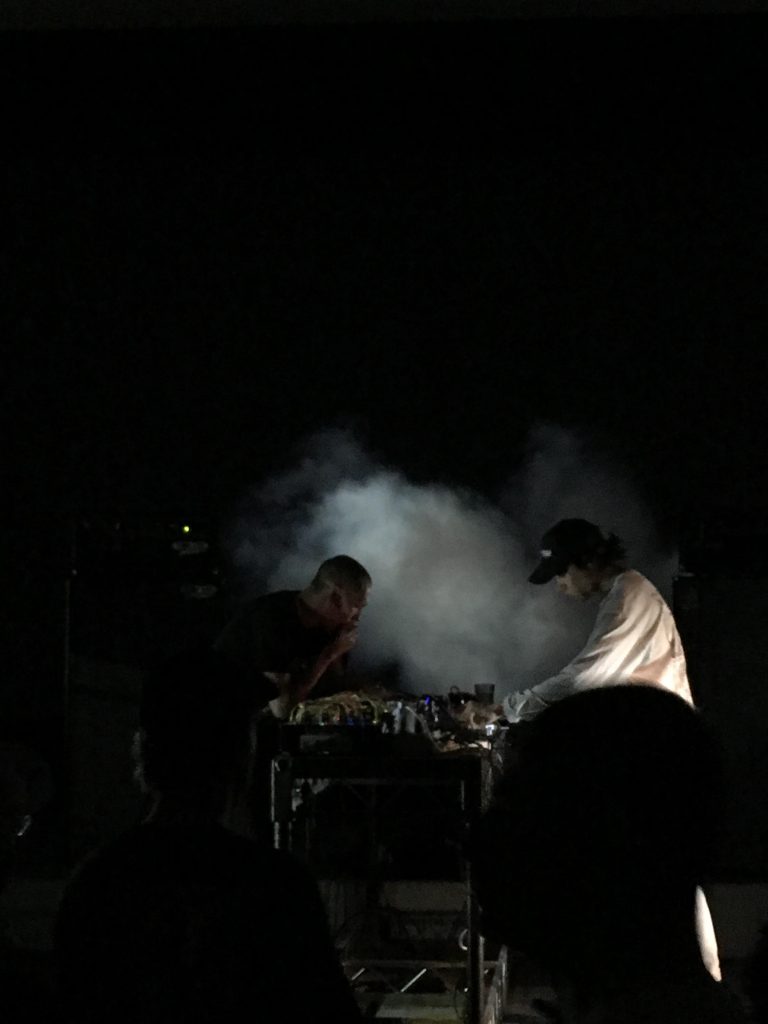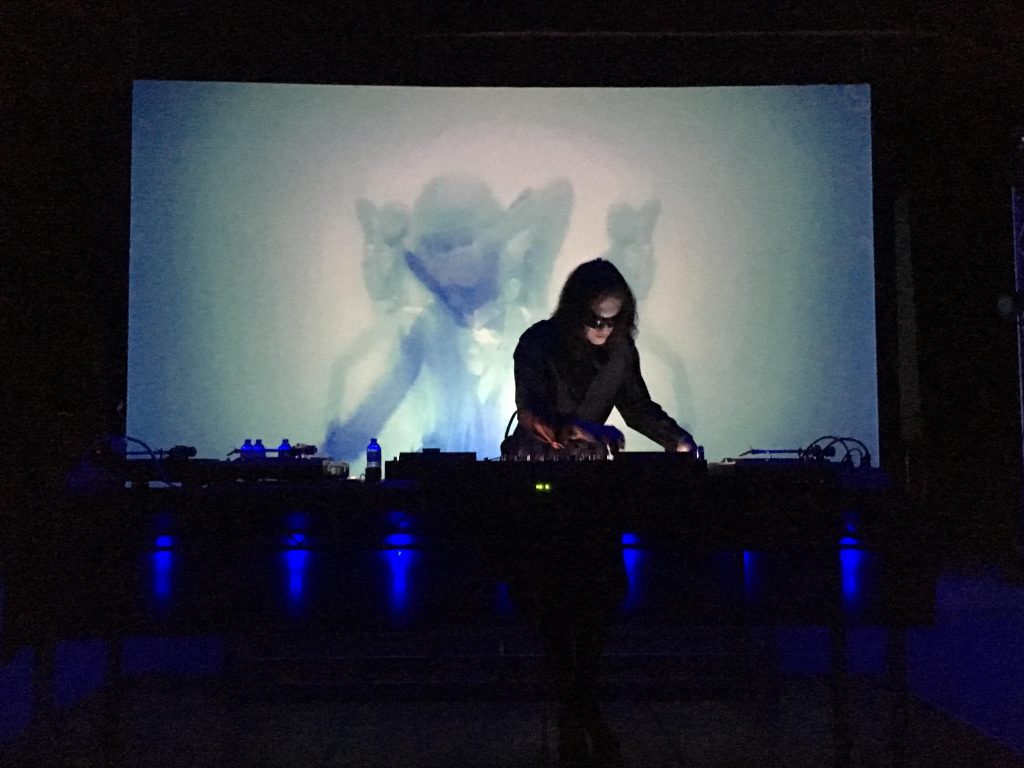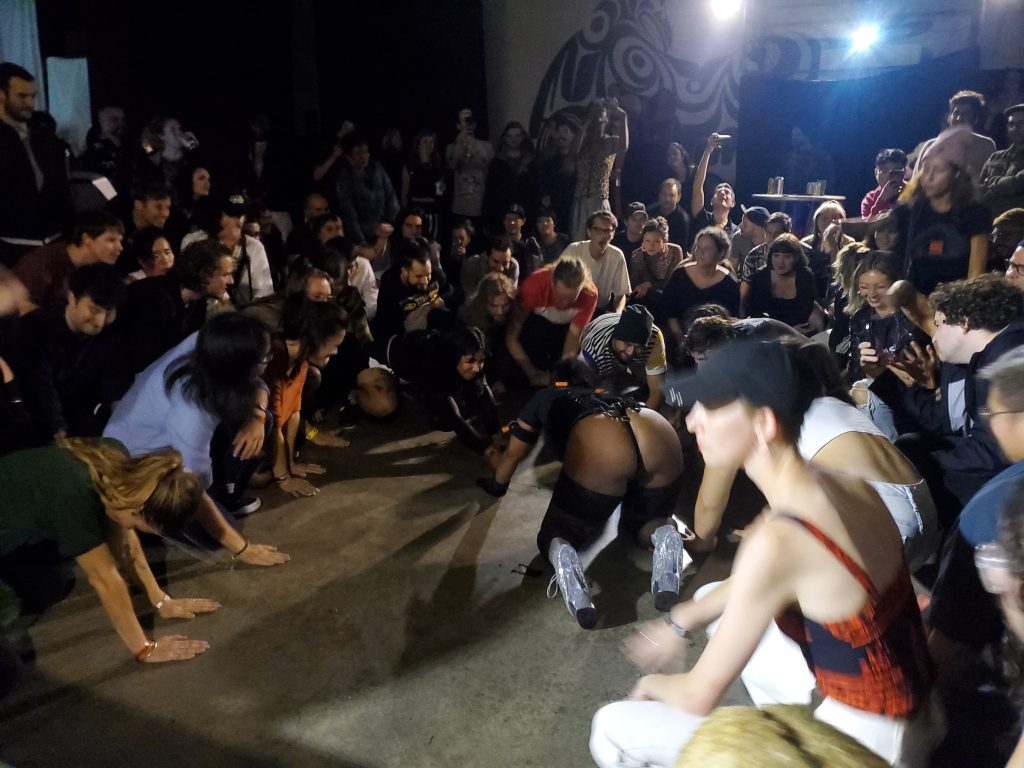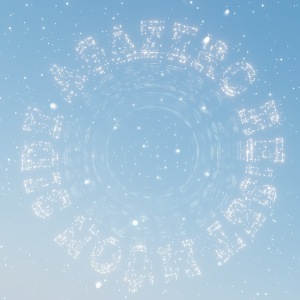Stanley Park is forested with trees that have been around for hundreds of years. Some are still standing, some are on their side with roots exposed, and others have been cut down with new growth springing from the stumps. While walking off a night’s debauchery during the Vancouver’s New Forms Festival, running September 25 to 27, the underground root systems giving way to unseen communication networks become an ideal analog of the media and music event’s objective.

In line with its curatorial mission to “unite creative communities, push artistic and conceptual boundaries, and explore digital media as an art form”, the program brings a new strategy to its curation this year with JS Aurelius, Lauren Goshinski, and Cecilia Corsano. The combination of their experience as organizers and artists in Vancouver, Pittsburgh and Seattle reinforces, respectively, means ideas of community come through fresh perspectives on a familiar location. New Forms offers a developed series of conversations and production workshops to accompany its live music schedule, comprised mostly of one-night label showcases. Giant Swan gives a notable demonstration of their modular synthesizer and FX pedal rig before speaking in a refreshingly intimate and colloquial way about its use. The conversation veers away from technical explanations; instead focussing on an insight to the way the duo approaches spaces and finds themselves in tune with a room. Lafawndah’s keynote panel culminates with a list of the industry’s failings in economic structure, while the ‘Inclusive Collectives’ panel inadvertently points to a cultural need for a semiotic overhaul on queerness through its failings as a critical dialogue. This failure brings attention to the fact that as intersectionality plays a larger role, the term ‘queer’ seems to have become a catch-all that loses its meaning and potency.
Meanwhile, the festival engineers collaborations between designers and performers, assigning visuals that compliment the tone of a given lineup. Outside of Jeremy Toussaint-Baptiste’s ‘Get Low (Real Deep)’ and Eli Muro’s ‘Tangible’, most of these video elements serve as direct support to the music. Toussaint-Baptiste’s choice to inundate festival-goers with low-frequency subs in a darkened fabric enclosure has some success in creating a sense of potentiality in the body; highlighting its function as an interface for sound but also takes on a counter-productive ambiguity about what to do with that potential. There’s the black-and-white imagery reminiscent of Ingmar Bergman’s Seventh Seal paired with A.F Jones and Dave Abramson’s mellow drum-synth duets, and the hypnotic chaos from Yasushi Harada accompanying Bearcats’ tenacious mixing. However, there isn’t a reflexive quality of dialogue where the audio might bring new light to the visuals. The enactment of subversiveness feels contrived at times, especially as glitched protest visuals are projected at Red Bull’s corporately-sponsored after hours. Nonetheless, a multitude of acts engage the crowd each night with formidable performances.

On Wednesday, City and i.o billow in with an overwhelming smokescreen, high-energy live drums and synth work at the top of their set. As the fog fades, the music takes a turn towards a more ghostly effect that recalls Goblin’s soundtrack for supernatural horror film Suspiria. Yatta and Via App set the tone for Thursday night’s PTP showcase, where the modern remix theatrics of the former—a hypersonic collage of memes, Lil Nas X ‘Hometown Road’ edits, and baroque overtures—operate in concert with the latter’s arresting industrial tremor. It’s an exciting departure from the ubiquity of white noise experiments heard that night. The general layout of New Forms works in concert on Friday, as the energy catapults through Lafawndah’s live show—a visceral fluttering of vocal riffs and percussive timbres—and finally brings the crowd’s energy to an apex of intensity as people dart between LSDXOXO’s erratic club montage and the thunderous reverberated rhythms of Giant Swan.
Firing up the main stage Saturday, Tempe-based label Ascetic House’s Baby Blue rolls out her distinct blends of pulsating industrial techno coupled with Ed Banger-era blog house classics. The hypermaximalist feel good ethos of Blue’s selection immediately engages the audience, throwing all in attendance in different directions as they flail and twirl around the Japanese Hall. House of Kenzo’s performance highlights a peak moment of the festival. In concert with visuals from the notable Rolfes Studio, the act consistently jumpstarts into the now-institutionalized genre of dark club deconstructions pioneered by Total Freedom, Arca and Rabit. Masterfully employing interactive visuals and a dynamic stage plot involving a live install of a platform in the middle of the floor, House of Kenzo stirs all in attendance to penultimate hedonic insanity; crowds of dancers seize and scream. Baby Blue makes out with band member Brexxit amidst the rapid-firing of club bangers, chants, and movement. The sensory-overload of the show encapsulates the group’s vanguard position far ahead of many of their contemporaries experimenting within the parameters of club music.

The regular showcases allow featured collectives to boast a holistic platform of sounds and talent developed within each of their respective communities. The blocked curation establishes a vernacular for each label, where New York-based label PTP uses a harsher vocabulary than Vancouver’s Quiet City concert series. Other local parties NuZi and s.M.i.L.e. bring a similar level of energy but through different semiotics of performance. The former offers an exercise in the breadth of contemporary Afrodiasporic rhythms, while the latter cycles rapidly across ambient and club styles at large. Together, the showcases allow discourse to forge a path along the differences seen between sub-genre and locale. Yet, while the curation-by-collective allows each lineup to make a cohesive thesis of their curatorial intentions, more reflexive mashups of talent is lacking. It does come together in the twilight hours of the afterparties, however, particularly with the s.M.i.L.e. showcase, which brings a juxtaposed lineup that draws connections and makes distinctions between performers—from the frenzied techno beats of Sebastian Rusian to Tommy Wright III’s hellish Memphis rap bars.
One of the successes of New Forms is unexpectedly in the schedule timing. Packing out nights back-to-back, attendees are given the days to sleep in and explore, which adds depth to the conversation between Vancouver and its visitors. The city itself is an intertwining of urban and forested area, of colonized and native land, and of networked subcultures. Attendees are offered a juxtaposition of ways intersectionality exists through multiple platforms of engagement, from moving between venues to reading the event schedule. This festival further makes its audience acutely aware of where they are in the history of Vancouver, in bold font in the program: “New Forms Festival respectfully acknowledges its location on unceded, traditional and ancestral Musqueam, Squamish, and Tsleil-Waututh territories.” While that can be read as simply a placation, it places the event within the city’s history and serves to acknowledge the ontology of its local communities.

There relationships between the venues, artists and organizers are felt—particularly backstage where stories of working around last minute issues take on an air of jovial nostalgia. This collaboratively spirited network is not explicitly defined but certainly makes itself present, where the infrastructures of subculture presented at New Forms becomes analogous with those root systems of the Stanley Park forest. Here, Vancouver’s underground fortifies its own connections and fosters new growth, collapsing them into the history of the venue, festival, subculture and the city.**
New Forms Festival was on across venues in Vancouver, running September 25 to 27, 2019.















